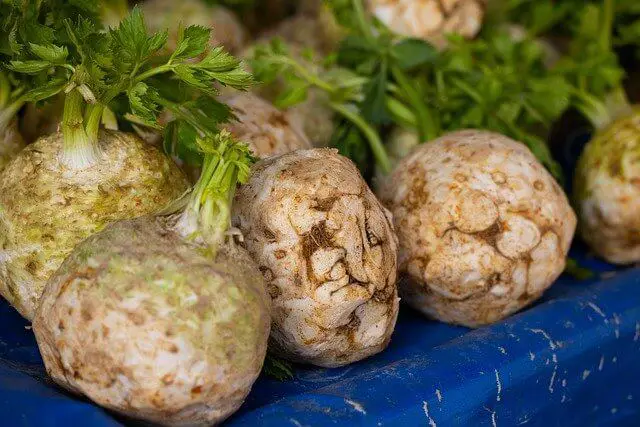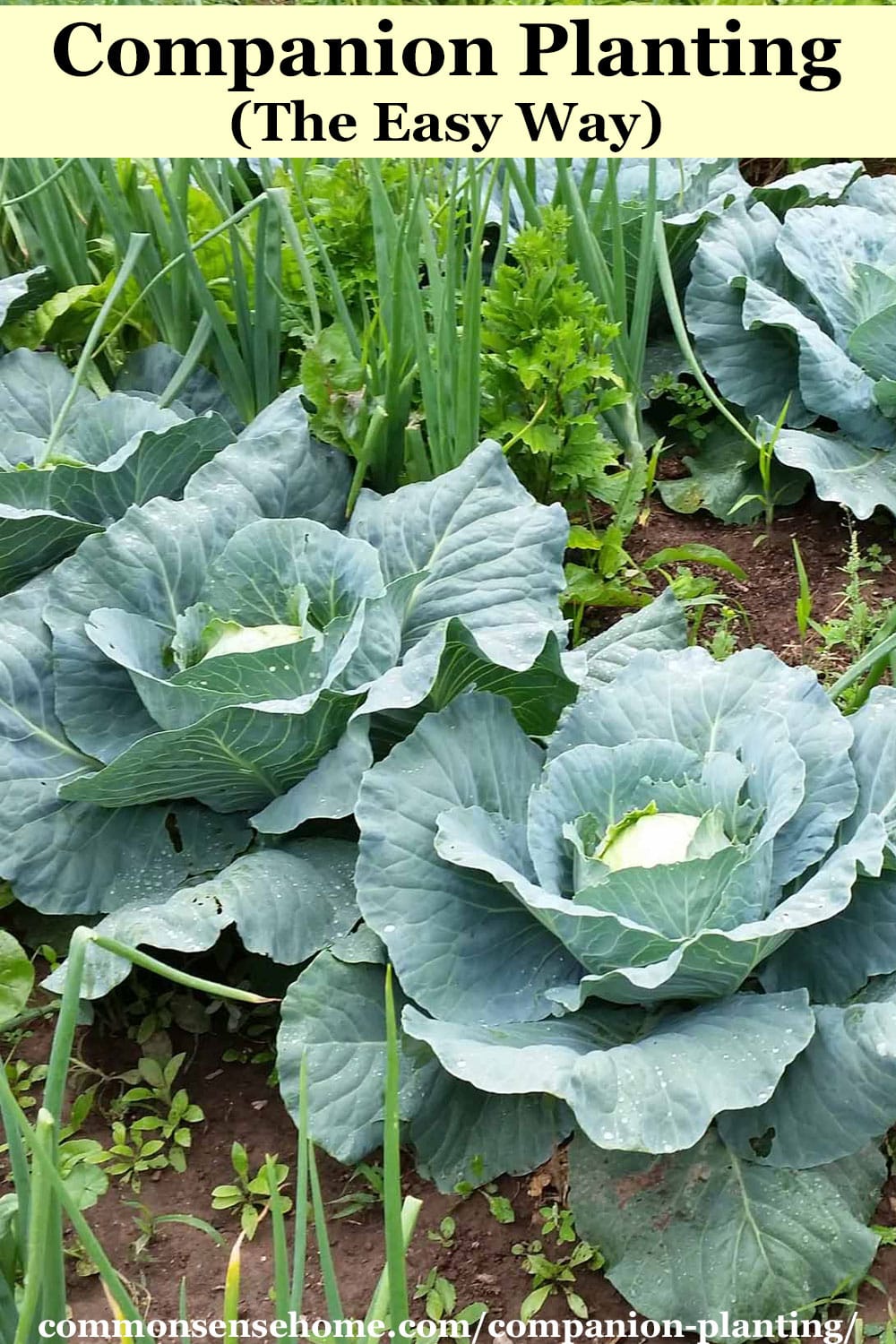The Ultimate Guide To Celeriac Companion Planting
The Ultimate Guide to Celeriac Companion Planting
Celeriac is a delicious and versatile root vegetable that can be enjoyed in a variety of dishes. But did you know that companion planting can help you grow bigger, healthier celeriac?
In this guide, we will discuss the benefits of companion planting with celeriac, as well as some of the best companion plants to choose from. We will also provide some tips on how to plant and care for your celeriac crops.
What is Companion Planting?
Companion planting is a gardening technique that involves planting certain plants together to benefit one another. By planting certain plants next to each other, gardeners can help to deter pests, attract beneficial insects, and even improve the flavor of certain crops.
There are many different benefits to companion planting, including:
- Increased yields
- Improved plant health
- Reduced pest and disease problems
- Enhanced flavor
- Increased biodiversity
Why Companion Plant Celeriac?
Celeriac is a relatively easy vegetable to grow, but it can benefit from companion planting. Some of the benefits of companion planting with celeriac include:
- Deterrent to pests. The strong scent of celeriac can help to deter pests such as carrot flies, aphids, and slugs.
- Attraction of beneficial insects. The flowers of celeriac attract beneficial insects such as ladybugs and hoverflies, which help to control pests.
- Improved soil health. Celeriac is a heavy feeder, so it can help to improve the soil by adding nutrients.
- Reduced competition for resources. By planting celeriac with compatible plants, you can help to reduce competition for water, nutrients, and sunlight.
Best Companion Plants for Celeriac
There are many different plants that can be companion planted with celeriac. Some of the best include:
- Brassicas: Brassicas such as broccoli, cauliflower, and Brussels sprouts help to repel pests such as cabbage root fly.
- Alliums: Alliums such as onions, garlic, and leeks help to repel pests such as carrot flies and aphids.
- Tomatoes: Tomatoes help to attract beneficial insects such as ladybugs and hoverflies, which help to control pests.
- Lettuce: Lettuce helps to suppress weeds and provide shade for celeriac.
- Spinach: Spinach helps to improve the soil by adding nitrogen.
- Peas: Peas help to fix nitrogen in the soil, which benefits celeriac.
- Beans: Beans help to improve the soil by adding nitrogen and breaking up the soil.
How to Plant and Care for Celeriac
Celeriac is a relatively easy vegetable to plant and care for. Here are some tips:
- Choose a sunny or lightly shaded spot with well-drained soil.
- Prepare the soil by adding compost or other organic matter.
- Plant the seeds 1/2 inch deep and 12 inches apart.
- Water the seeds regularly, keeping the soil moist but not soggy.
- Fertilize the plants every few weeks with a balanced fertilizer.
- Harvest the celeriac when the roots are large and firm.
Conclusion
Companion planting is a great way to improve the health and productivity of your celeriac crops. By planting celeriac with compatible plants, you can help to deter pests, attract beneficial insects, and improve the soil.
With a little planning, you can enjoy delicious and healthy celeriac from your own garden.
Celeriac is a delicious and versatile root vegetable that can be enjoyed in many different dishes. But did you know that the plants you grow near your celeriac can also affect its flavor and growth?
That's where companion planting comes in. Companion planting is the practice of planting certain types of plants together to benefit each other. For example, some good companion plants for celeriac include:
- Spinach: Spinach helps to repel pests that can damage celeriac, such as carrot fly and celery fly.
- Peas: Peas help to improve the nitrogen levels in the soil, which is beneficial for celeriac.
- Brassicas: Brassicas, such as broccoli and cabbage, help to deter pests that can damage celeriac, such as slugs and snails.
Of course, there are also some plants that you should avoid planting near celeriac. These include:
- Potatoes: Potatoes can compete with celeriac for water and nutrients.
- Cucumbers: Cucumbers can attract pests that can damage celeriac, such as cucumber beetles.
- Squash: Squash can compete with celeriac for water and nutrients.
If you're interested in learning more about companion planting for celeriac, I recommend visiting Gardenia Inspiration. This website has a wealth of information on the topic, including a list of good and bad companion plants for celeriac.
FAQ of celeriac companion plants
Q: What are some good companion plants for celeriac?
A: Some good companion plants for celeriac include:
- Spinach: Spinach helps to repel pests from celeriac, and the two plants also benefit from each other's shade.
- Peas: Peas help to fix nitrogen in the soil, which is beneficial for celeriac.
- Carrots: Carrots and celeriac both have similar growing requirements, and they can help to deter pests from each other.
- Brassicas: Brassicas, such as broccoli, cabbage, and Brussels sprouts, help to repel pests from celeriac.
- Bush beans: Bush beans help to attract pollinators, which can help to improve the pollination of celeriac.
Q: What are some plants that should not be planted near celeriac?
A: Some plants that should not be planted near celeriac include:
- Squash: Squash can compete with celeriac for water and nutrients.
- Cucumbers: Cucumbers can attract pests that can also damage celeriac.
- Tomatoes: Tomatoes can release a chemical that can stunt the growth of celeriac.
- Potatoes: Potatoes can harbor diseases that can also affect celeriac.
Q: What is the best fertilizer for celeriac?
A: Celeriac needs lots of nitrogen to produce its succulent growth. The best fertilizer for celeriac is compost tea or liquid kelp. These fertilizers are high in nitrogen and can be applied weekly to help celeriac thrive.
Q: How far apart should celeriac plants be planted?
A: Celeriac plants should be planted 12-18 inches apart. This will give them enough space to grow and develop their roots.
Q: When should celeriac be harvested?
A: Celeriac is ready to harvest when the roots are about 2-3 inches in diameter. The best time to harvest celeriac is in the fall, after the first frost.
Image of celeriac companion plants
- Spinach - Spinach is a great companion plant for celeriac because it helps to repel pests and diseases. It also helps to improve the flavor of celeriac.

- Peas - Peas are another great companion plant for celeriac. They help to improve the nitrogen content of the soil, which is beneficial for celeriac.

- Onions - Onions help to repel pests and diseases from celeriac. They also help to improve the flavor of celeriac.

- Carrots - Carrots help to improve the flavor of celeriac. They also help to deter pests from celeriac.

- Lettuce - Lettuce helps to suppress weeds around celeriac. It also helps to improve the flavor of celeriac.

Post a Comment for "The Ultimate Guide To Celeriac Companion Planting"